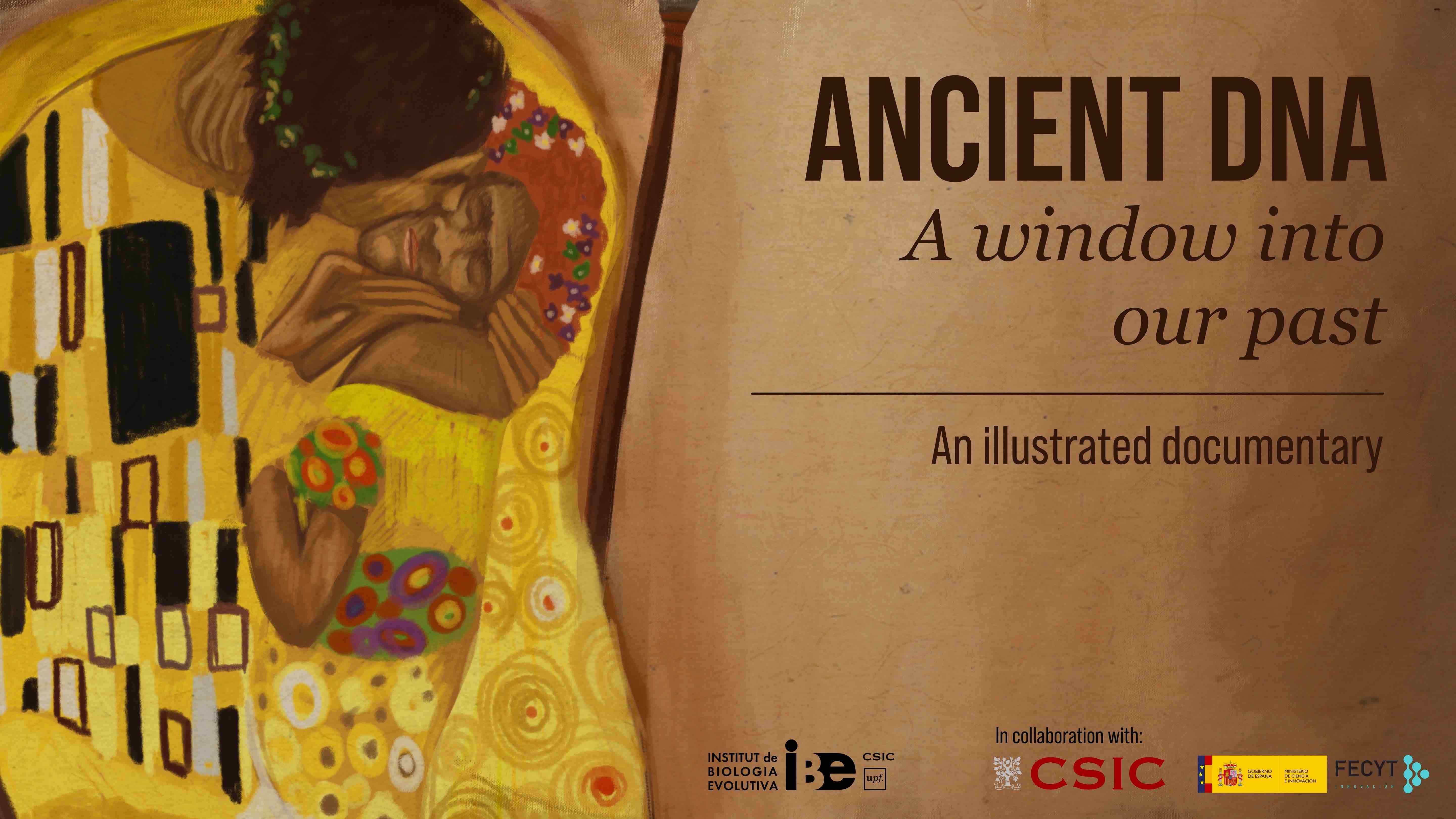"Ancient DNA: A Window into Our Past"; An IBE documentary on human evolution through ancient DNA
"Ancient DNA: A Window into Our Past"; An IBE documentary on human evolution through ancient DNA
The Institute of Evolutionary Biology (IBE) launches today the illustrated documentary "Ancient DNA: a window into our past", about the major contributions of the center to reseach on the evolutionary history of humans in recent years.
The film, which has been illustrated by Laura Fraile, explains among other things how it was discovered that modern humans coexisted and mixed with other extinct archaic populations - such as Neanderthals and Denisovans - through the analysis of ancient DNA.
The launch of the documentary coincides with a unique moment for evolutionary biology, given that the world expert in paleogenomics Svante Pääbo has recently received the Nobel Prize in Medicine for his discoveries on the genomes of extinct hominids and human evolution.

The Institute of Evolutionary Biology (IBE), a joint center of Spanish National Research Council (CSIC) and Pompeu Fabra University (UPF), presents today the illustrated documentary "Ancient DNA: A Window to Our Past" through its YouTube channel. The piece addresses some of the most important findings on the evolutionary history of humans that have been made through ancient DNA in recent years, and in which IBE researchers have taken part.
The documentary addresses some of the most important findings on the evolutionary history of humans that have been made through ancient DNA in recent years, and in which IBE researchers have taken part.
The documentary has been illustrated and narrated by the artist and biologist Laura Fraile, and has been supervised by researchers and the communication and outreach unit of the IBE. For this project, an innovative format has been chosen, such as real-time illustration recorded on video, inspired by the sessions streamed over the internet by the new content creators on digital platforms. The central figure of the documentary is a re-interpretation of "The Kiss" by the artist Gustav Klimt, this time featuring an encounter between a Neanderthal and a modern human individual.
The audiovisual piece also comes at a very important moment for evolutionary biology, coinciding with Svante Pääbo being nominated for the Nobel Prize in Medicine - precisely for his discoveries on the genomes of extinct hominids and human evolution.
IBE staff have been involved in many of these findings through various very young and still largely unknown disciplines: palaeogenomics, palaeoproteomics, and artificial intelligence. While palaeogenomics consists of the recovery and analysis of the DNA found in fossils, palaeoproteomics is a technique based on the extraction of proteins from fossilized material (which are preserved much longer than DNA over time, although they contribute much less information). For its part, artificial intelligence simulates how the neurons in our brain work to computationally generate a “neuronal tissue” that allows us to make predictions with data. This technique can be used to contrast the possible routes that the history of humanity has traced from the genetic variation present in current populations.
The central figure of the documentary is a re-interpretation of "The Kiss" by the artist Gustav Klimt, this time featuring an encounter between a Neanderthal and a modern human individual.
Through this documentary, the IBE seeks to share with a wide and diverse audience how these techniques work and what are the scientific findings that have allowed us to achieve today. Among others, that modern humans interbred in the past with other archaic populations - such as Neanderthals and Denisovans - leaving a mark on our genes.
The IBE has one of the few laboratories specialized in ancient genome analysis in Europe, and as key agent in the field of paleogenomics, it has participated in various high-impact investigations for the reconstruction of the evolutionary history of Sapiens.
Some examples are the participation of IBE researchers Carles Lalueza-Fox and Tomàs Marquès-Bonet in the Neanderthal Genome Sequencing Project, the results of which were published in 2010 in the Science journal. Lalueza-Fox , currently director of the Barcelona Museum of Natural Sciences (MCNB), collaborated with the team of Svante Pääbo, from the Max Planck Institute, and Antonio Rosas, from the National Museum of Natural Sciences (MNCN-CSIC), in the sequence of the Neanderthal individual found in the cave of El Sidrón, in Asturias.
The IBE has one of the few laboratories specialized in ancient genome analysis in Europe, and as key agent in the field of paleogenomics, it has participated in various high-impact investigations for the reconstruction of the evolutionary history of Sapiens.
Also in 2010, Marquès-Bonet participated with Pääbo and his collaborators in the discovery of a new archaic population, the Denisovans, through the DNA of a fragment of the bone of a little finger found in the Denisova cave, in southern Siberia. Published in Nature, it was the first discovery of an extinct population from genetic information alone. More recently, in 2019, Marquès-Bonet participated in the reconstruction of the appearance of the extinct Denisovans through DNA analysis of the little finger, and also in the palaeoproteomic analysis of the extinct giant ape Gigantopithecus blacki.
Researchers Oscar Lao and Jaume Bertranpetit from the IBE have also participated in the reconstruction and study of human evolution, through the use of state-of -the-art artificial intelligence techniques. Thanks to the use of deep learning, in 2019 the team managed to anticipate that there could be a third extinct archaic population - a hybrid of Neanderthals and Denisovans - that reproduced with modern humans in South Asia tens of thousands of years ago.
The recently released documentary can now be viewed on the IBE's YouTube channel in Spanish, Catalan and English. The project has had the collaboration of the Fundación Española para la Ciencia y la Tecnología - Ministerio de Ciencia e Innovación.
